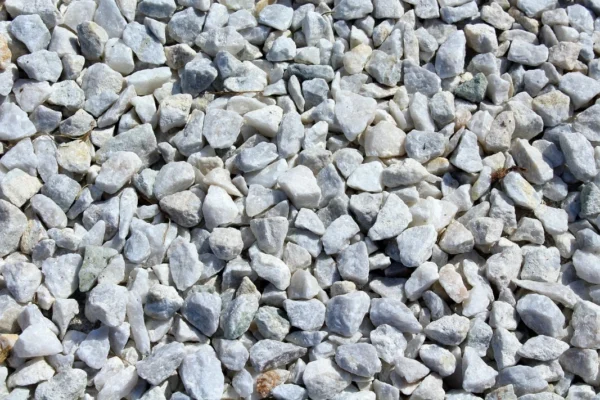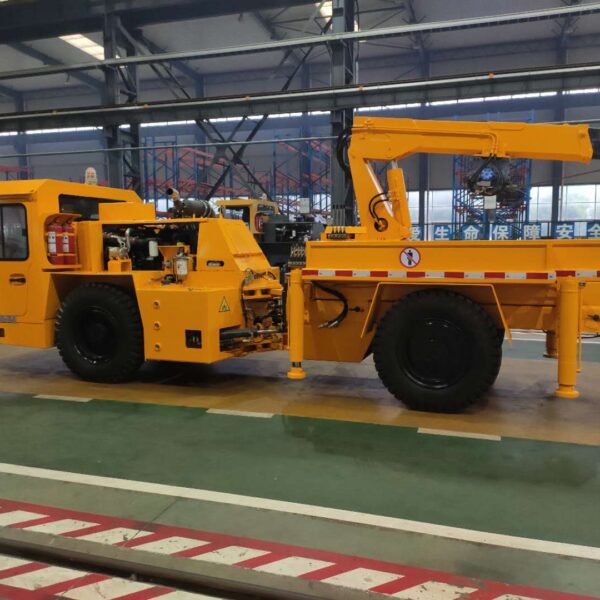There has been a lot of demand for non-metallic rocks recently. Statistica says that in 2024, this market will be worth about $270.1 billion. Because of this, non-metallic minerals are essential resources in many industries.
Non-metallic minerals are usually non-conductive, except graphite. You can not make sheets like you can for metals. There are many examples of non-metallic minerals out there. Some familiar names are limestone, gypsum, clay, and silica.
Non-metallic mineral mining is mainly an open-pit type. However, many minerals can also be found underground. People prefer open-pit mining when the ore is close to the surface. This type of mining generally removes the top layer of soil to access the minerals below.
On the other hand, when the ore is deep underground, underground mining is preferred. In non-metallic minerals, you need tunnels or shafts to reach the ores. For this type of job, you will need various underground mining vehicles. Fucheng LHD is a leading manufacturer of these mining equipment.
This article mainly talks about underground mining of non-metallic minerals. What equipment is used in this mining process? It also talks about how minerals are separated from ores through various methods.

Overview of non-metallic minerals
Non-metallic minerals are essential in many industries. Construction, agriculture, and manufacturing industries are common in this case. People also recognize them as industrial minerals.
They are also different from non-ferrous ores. Many non-metallic minerals exist on earth. We have classified them into three primary categories to make it easy to discuss.
A. Industrial minerals
You might be familiar with glass, ceramics, and fertilizers. Have you ever wondered how they are made? What are their raw materials? You are right: non-metallic minerals, like feldspar, perlite, and clay.
| Non-metallic minerals | Processed Products | Processing Method |
| Perlite | Insulation, lightweight concrete, and horticulture soil additives | Crushed, screened, and expanded by heating |
| Feldspar | Ceramics, glass, fiberglass, and porcelain | Crushed, ground, and separated |
| Phosphate Rock | Fertilizers, animal feed supplements | Crushed and Refining |
| Clay | Pottery, bricks, tiles, ceramics | Mined, processed, and refined |
| Vermiculite | Insulation, soil conditioner, packaging | Exfoliation |
| Diatomite | Filtration, abrasives, and insulation | Crushed, dried, and calcined |
| Talc | Talcum powder, ceramics, paint, and plastics | Crushed and ground to powder |
| Magnesite | Magnesium oxide, refractories, and building materials | Crushed, calcined, and processed |
| Silica Sand | Glass, foundry work, construction materials, and filtration media | Washed and processed to remove impurities |
| Zeolite | Water purification, agriculture, air purification, and catalysts | Crushed, ground, and processed |
| Barite | Frilling fluids, barium chemicals, and pigments | Crushed and ground to fine powder |

B. Construction Minerals
People prefer these rocks for a variety of uses within this area. First, they are mined underground. Then, they go to the factory and undergo some processing. Finally, factories give them many forms, such as cement or concrete. However, you can do this in several ways. It typically varies depending on the product type. However, crushing, screening, and sorting are typical in this case.
These non-metallic minerals are durable and easy to find and process. Because of this, people mostly prefer them for construction purposes.
| Non-metallic minerals | Processed Products | Processing Method |
| Limestone | Cement, concrete, building stone | Crushing, screening, kiln-fired |
| Sand and Gravel | Aggregates for roads, concrete, asphalt, fill material, road base | Washing, sorting, and screening |
| Crushed Stone | Road construction materials, concrete, base material for foundations, railroad ballast | Blasting, crushing, screening, and sorting |
| Dimension Stone | Building facades, monuments, flooring, and decorative stone and paving stone | Cutting, shaping, and polishing |

C. Specialty Minerals
These non-metallic minerals are pretty different from other types. Some of these types that are hard to find are gemstones, serpentine, rhyolite, and many others. The processing method is most frequently cutting, shaping, and polishing. You can make almost anything worn as jewelry or used for home decoration.
| Non-metallic minerals | Processed Products | Processing Method |
| Gypsum | Cement, concrete, building stone, road base, and lime | Crushing, grinding, and calcining |
| Gemstone | Jewelry, decorative items | Crushing, drying, and calcining |
| Serpentine and Rhyolite | Construction materials, landscaping, decorative stone | Cutting, shaping, and polishing |
Underground non-metallic mineral mining and processes
You are already familiar with the different types of non-metallic minerals. Also, you know what you can make from them at the end. However, you can get these non-metallic minerals from open-pit or underground mining.
In general, open-pit mining is simpler but comparatively less productive. While underground mining is relatively complicated, it is also more profitable. Both methods of non-metallic mining require suitable practices. However, the kind of mining vehicle differs based on the type of mining.
This section will provide some references to mining underground non-metallic minerals. It will not elaborate on these but list some main activities. However, the main aim of this article is to present the mining vehicles required for this task.
When to Use Underground Mining
The decision to go underground mining depends on several factors. In this case, however, we have only three, which are the most vital here. The first criterion is whether the ore body is far from the earth’s surface. Second, how much waste may you have to dispose of? Third, what are the operating costs of stripping the ore body?
In some cases, the geometrical presentation of the ore body decides the type of mining methods.
Methods of Non-metallic Underground Mining
Earlier, people depended on inclined or vertical shaft methods to extract non-metallic minerals. In these methods, tunnels were made vertically or inclinedly; however, they were not carved but straight. At that time, it was an expensive method that required much effort to reach more body parts.
In modern worlds, the spiral decline shaft method’ is used. This method is suitable for non-metallic mining, especially for shallow mineral extraction.
Inclined or Vertical Shafts
As the name implies, these shafts create a tunnel directly to the ore. Depending on convenience, the direction might be inclined or declined.
Vertical tunnels are perfect for reaching deep ore bodies. In these methods, a vertical conveyor belt extracts the ore from the mine and sends it to the surface.
Spiral Decline Shafts
As the name suggests, this type of underground mining creates tunnels that spiral to the ore body. In this way, you can access the different parts of the ore body, increasing productivity. This type of non-metallic mining is used in modern ages.
Non-metallic Minerals Mining Process
The actual mining process starts when the underground mining company comes to a decision. For clarity, let’s approximate the process into five broad stages.
Step #1 Extraction
The first step, or extraction process, involves many complex stages. A detailed discussion might be time-consuming; therefore, I will highlight some main stages.
First, experts prepare a detailed plan that includes all the necessary points. Notable are safety, tunnel design, blasting explosives, and needed vehicles. This plan also mentions which underground mining equipment is essential.
Also, many types of approvals are required to ensure safety. Once higher authorities approve this, an underground mining company can finally start mining.
Recently, underground mining companies preferred the spiral declining method for non-metallic minerals. For soft soil removal, typical machines like road headers are used. Drill rigs, dump trucks, and hauling machines are used for hard rock removal. The blasting method is also necessary for removing hard stones.
The miner gradually creates a tunnel and reaches the ore body by blasting, removing, and hauling the stones. Then, they transport the ore using a conveyor belt or dump truck.
Step #2 Crushing and Grinding
After the miners extract the ore, they break it into powder using crushing and grinding machines. Usually, the ore is hard and solid. This form of ore may be hard to process and separate the desired mineral. Because of this, crushing and grinding is crucial.
Step #3 Separation
After crushing and grinding the mineral, it is separated in a unique process. People often call this separation method Gangue. However, the type of separation method may vary based on the kinds of minerals. Flotation, gravity separation, and leaching are some popular methods.
Step #4 Drying and Calcining
After separating the valuable minerals, they are dried and calcined. Drying is essential because the minerals are easier to handle and store once the moisture is removed. On the other hand, chemical changes occur with calcining. These methods are handy for gypsum or limestone.
Step #5 Emission Control
Every step in this extraction process may create emissions. Mainly, they produce PM, PM10, CO, NOx, SO2, and VOCs. These emissions might be harmful to human bodies and the environment. Thus, necessary steps must be taken to control these emissions.

Necessary Underground Equipment for Non-metallic Minerals
Various types of equipment are necessary in underground mining. Some equipment loosens the rocks, while some scoop them. Some carry miners, while some carry supplements. In this way, miners gradually create a tunnel and finally reach the ore body.
Underground Jumbo Drill
A jumbo drill creates holes inside the rocks. These holes are called blast holes. These holes are made to put explosives in them to blast the rocks. In this way, miners loosen the rock wall.
Underground Scaling Jumbo
After blasting the holes, scaling jumbo removes the loose rock and debris from the walls and roof. This process is usually called scaling. Scaling jumbos must be heavy-duty because they often face loose rock impact.
Underground Mining Scoptram
Once the loose rocks are removed from the walls, scooptram takes them and hauls them towards dump trucks. Scooptrams can have various types and shapes. It typically depends on the size of the tunnels.
Underground Mining Trucks
There are several types of underground mining trucks, but underground dump trucks are the most common. Their primary job is to transport loose rocks from mines to the surface.
Other Mining Equipment
There are other types of underground equipment besides the above four. Personnel and material carriers, lifters, oil tankers, and maintenance vehicles are noteworthy.
Final Thought
We rely on various non-metallic minerals and their products daily, which are crucial for humans. Different underground mining companies extract these minerals from mines in multiple ways. Some standard methods are inclined, vertical, and spiral.
Miners must rely on high-quality mining equipment for every technique. Fucheng LHD offers a wide range of underground mining equipment. You can customize the vehicles or equipment based on your mining requirements.
For more information, feel free to contact us.











